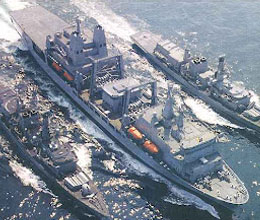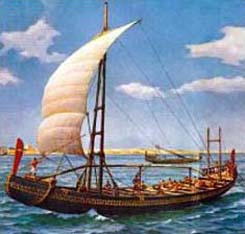Ships & Boats
What is a ship & boat?

Ships are one of the oldest and most important means of transportation. For hundreds of years, people have sailed the seas to explore, to settle, to trade, and sometimes to conquer. Today, trade among countries still depends heavily on ships. Ships sail along seacoasts, cross the oceans, and travel on inland waterways.
Many different types of ships are used including giant tankers that haul petroleum and other liquids; refrigerated ships carrying fresh fruits, meats, and vegetables; dry bulk carriers hauling grain, ore, and sand; cargo ships transporting manufactured goods; and passenger liners carrying travelers.
A boat is a small vehicle for traveling on water. A boat can have oars, paddles, sails, or a motor to make it move.
The origins

Humans have tended to live near water, and it is natural to make use of things that float. Logs or bundles of reeds were lashed together to form rafts; hollow trunks were improved to become dugout canoes. Once the principle of a watertight hull was understood, animal hides or the bark of trees were attached to a framework of bamboo or wicker to make a simple coracle.
Boats of all these kinds have were made by technologically primitive communities, and many continue to be made into the 20th century.
Both the earliest civilizations, the Egyptian and the Mesopotamian, made extensive use of boats for transport on the Nile, Euphrates and Tigris. The Nile in particular provided a smooth ride, for the wind always blew from the north to the south and the current always flew from the south to the north. One of the earliest known boats, was discovered buried beside a pyramid at Giza, dating from around 2500 BC. It was made from planks of cedar, 143 feet (44m) long and 20 feet (6m) wide.
The Greek, the Vikings and the Romans in order of the times of history extensively used large ships, known as War Ships to fight battles out on sea. Five banks of oars (rowed by 300 oarsmen), moved the ship and victory usually involved ramming the other ships, making the the size of the ship an important factor.